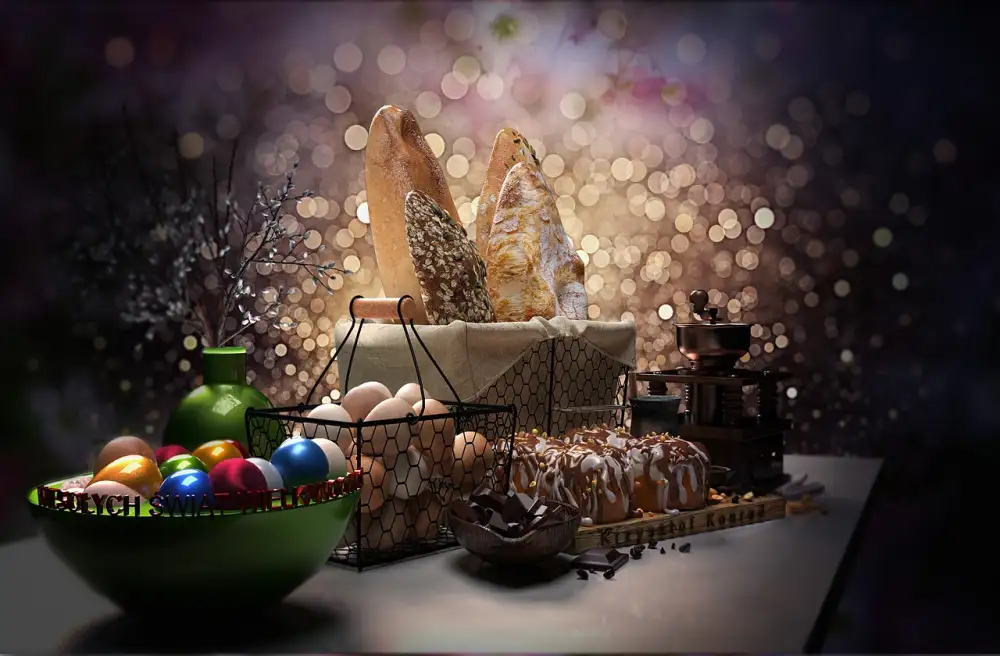Delicious Easter Bread Recipe: A Time-Honored Tradition for Your Home

Easter bread, also known as "Pasca" or "Paska," is a traditional sweet bread enjoyed during the Easter season in various cultures around the world. This rich and flavorful bread holds a special place in many households, symbolizing the end of Lent and the celebration of Easter Sunday. The bread is often adorned with decorative elements such as dyed eggs or intricate braids, making it not only delicious but visually stunning as well. Join us on a culinary journey as we explore the history, ingredients, and preparation of this beloved Easter treat.
History and Significance of Easter Bread
Easter bread, also known as "Pascha" or "Paska," has a rich history dating back to ancient times. It is a traditional food consumed during the Easter holiday in many cultures around the world. The significance of Easter bread varies among different regions but is commonly associated with the religious symbolism of rebirth and new beginnings. In Eastern European countries, such as Russia and Ukraine, Easter bread is often decorated with symbolic designs representing aspects of the Christian faith, making it a centerpiece of Easter celebrations. The act of baking and sharing Easter bread is a way to commemorate the resurrection of Jesus Christ and bring families together in joyous feasting.
Ingredients Required for Easter Bread
To make traditional Easter bread, you will need the following ingredients:
1. 4 cups all-purpose flour
2. 1/2 cup sugar
3. 1 packet active dry yeast
4. 1/2 cup warm milk
5. 1/2 cup unsalted butter, melted
6. 3 eggs
7. 1/2 teaspoon salt
8. Zest of one lemon or orange
9. 1/2 cup mixed dried fruits (such as raisins, currants, and candied citrus peel)
10. Optional: colored sprinkles or almonds for decoration
These basic ingredients can be customized with additional spices like cinnamon or nutmeg, or even a splash of rum for extra flavor depth. Experimenting with different variations can add a unique twist to your Easter bread recipe while still honoring the traditional roots of this beloved holiday treat.
Step-by-Step Instructions for Making Easter Bread
1. In a large mixing bowl, combine warm milk, sugar, and yeast. Let it sit for 5-10 minutes until frothy.
2. Add in melted butter, eggs, salt, and flour gradually while stirring continuously to form a dough.
3. Knead the dough on a floured surface for about 8-10 minutes until smooth and elastic.
4. Place the dough in a greased bowl, cover with a damp cloth, and let it rise in a warm place for 1-2 hours until doubled in size.
5. Punch down the dough and divide it into three equal parts. Roll each part into ropes and braid them together.
6. Transfer the braided dough onto a baking sheet lined with parchment paper, cover, and let it rise again for 30-45 minutes.
7. Preheat the oven to 350°F (180°C) and brush the bread with an egg wash before baking for 25-30 minutes until golden brown.
8. Allow the Easter bread to cool before slicing and serving. Enjoy this delicious traditional treat with your loved ones!
Tips and Tricks for Perfecting Your Easter Bread
To ensure your Easter bread turns out perfectly, here are some tips and tricks to keep in mind:
1. Use fresh ingredients: Make sure your yeast is not expired and that your flour is fresh for the best results.
2. Knead the dough well: Proper kneading helps develop gluten, giving the bread its desired texture.
3. Let the dough rise properly: Allow enough time for the dough to rise until it has doubled in size to ensure a light and airy bread.
4. Brush with egg wash: Before baking, brush the loaf with an egg wash to give it a shiny, golden crust.
5. Don't overbake: Keep an eye on your bread while it's in the oven to prevent it from becoming too dry or tough.
By following these tips, you'll be on your way to creating a delicious and beautifully textured Easter bread that will impress your family and friends.
Serving Suggestions and Pairings for Easter Bread
When serving Easter bread, consider pairing it with a variety of accompaniments to enhance the flavors and overall experience. Traditional options include honey butter, fruit preserves, or even a simple drizzle of honey for a touch of sweetness. For a savory twist, try serving slices of Easter bread with creamy cheeses like brie or goat cheese. Additionally, pairing Easter bread with a hot cup of coffee or tea can make for a delightful breakfast or afternoon snack. Experiment with different combinations to find what suits your taste buds best and enjoy this time-honored treat in new and exciting ways.
Easter bread is not just a delicious treat; it is a symbol of tradition, unity, and celebration. As we gather around the table to enjoy this time-honored recipe, we are reminded of the rich history and significance behind this festive bread. The process of making Easter bread may require time and effort, but the end result is always worth it. Whether you follow a classic recipe or add your own modern twist, the joy of sharing this bread with loved ones remains unchanged. So this Easter, embrace the tradition, savor each bite, and create lasting memories with your family and friends around a loaf of freshly baked Easter bread.
Published: 06. 03. 2024
Category: Home



